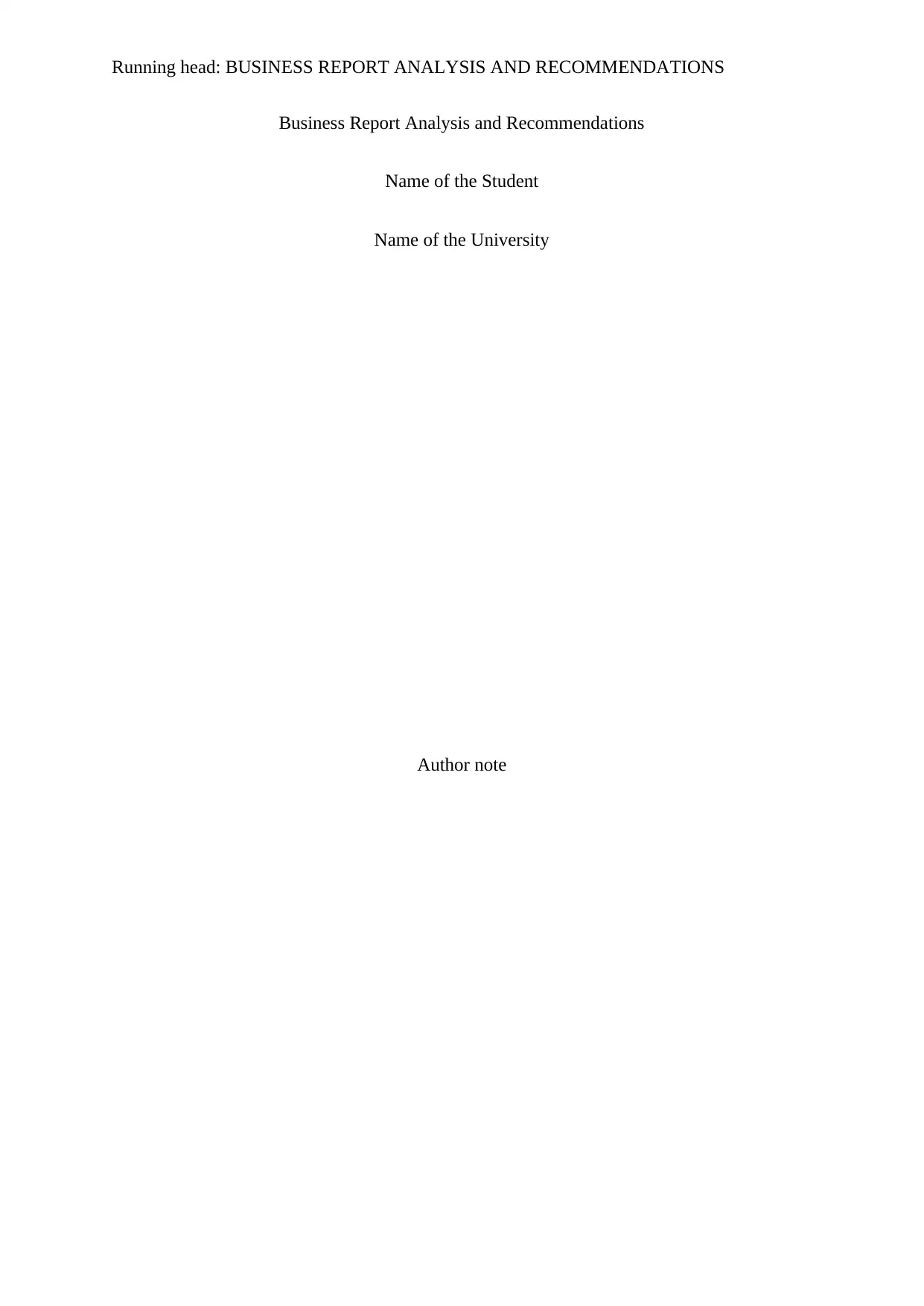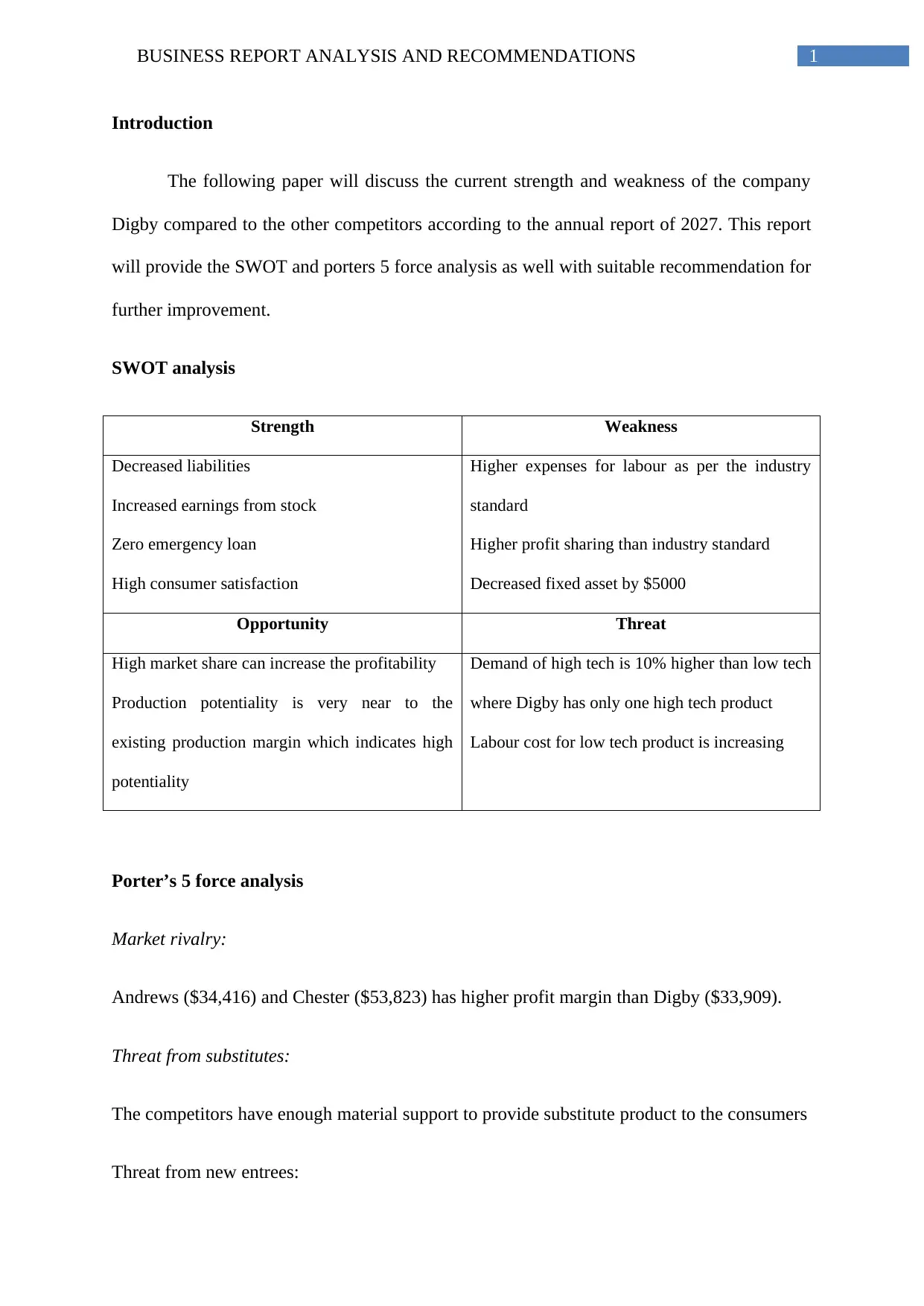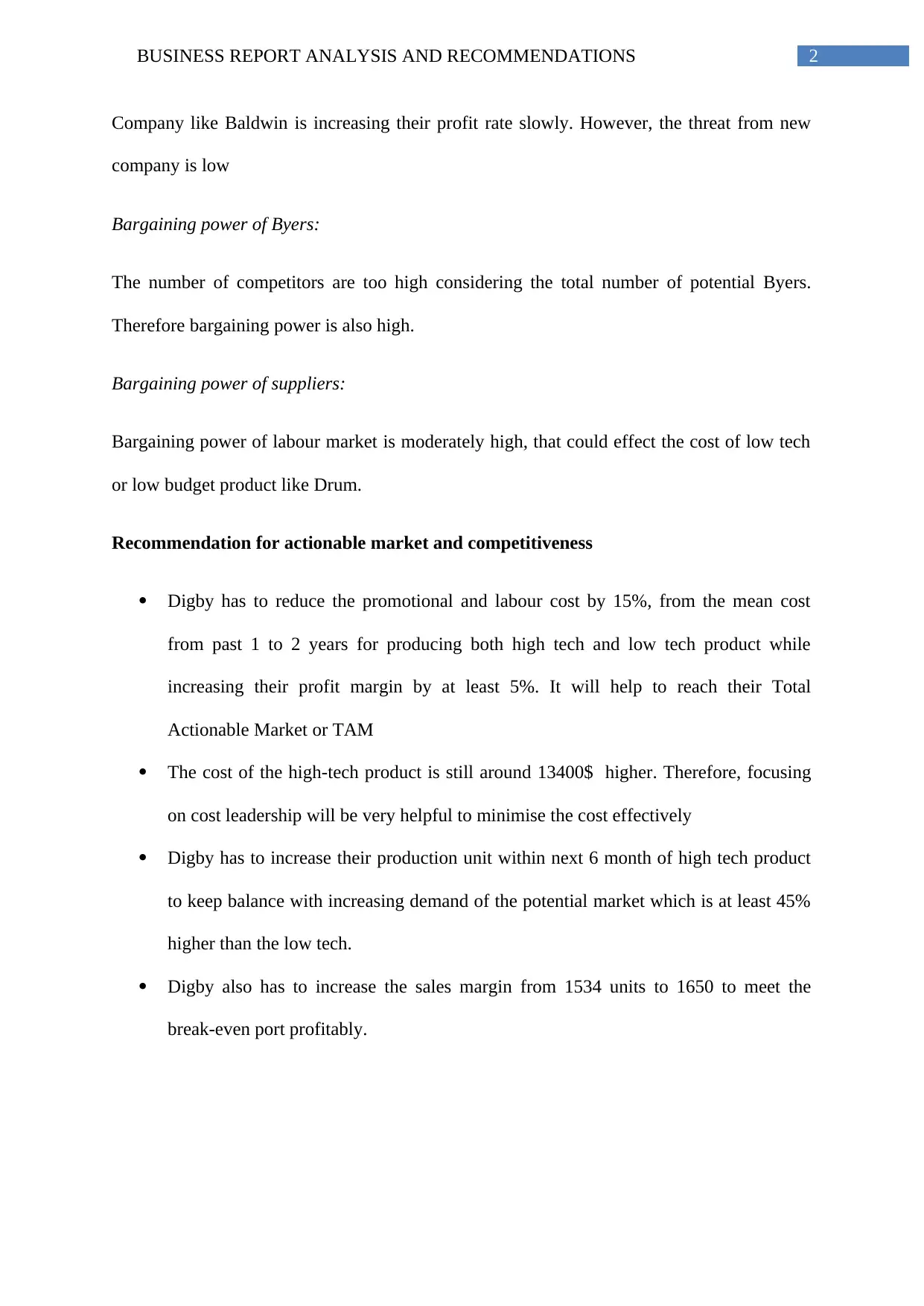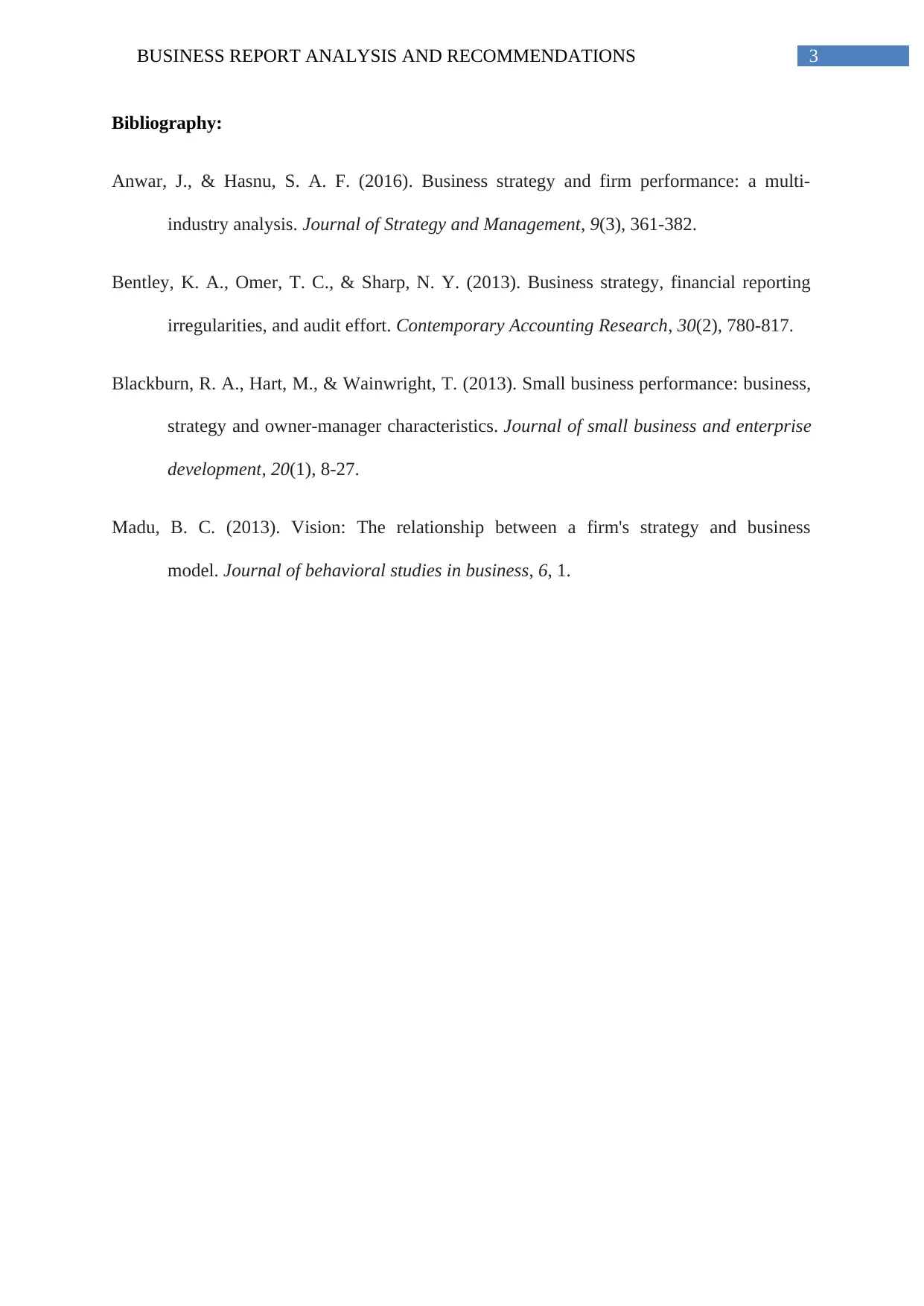Business Report Analysis and Recommendations: Digby Company 2027
VerifiedAdded on 2023/04/23
|4
|609
|487
Report
AI Summary
This report provides a comprehensive analysis of the Digby company based on its 2027 annual report. It begins with an introduction outlining the report's objectives: to assess Digby's strengths and weaknesses in comparison to competitors, utilizing SWOT and Porter's Five Forces analyses. The SWOT analysis details the company's strengths (e.g., increased earnings, high consumer satisfaction), weaknesses (e.g., higher labor expenses, decreased fixed assets), opportunities (e.g., high market share), and threats (e.g., competitors' material support for substitutes). The Porter's Five Forces analysis evaluates market rivalry, the threat of substitutes and new entrants, and the bargaining power of buyers and suppliers. The report concludes with actionable recommendations, including cost reduction strategies, production unit increases for high-tech products, and sales margin improvements to meet break-even points. These recommendations aim to enhance Digby's market competitiveness and overall profitability. The report also includes a bibliography of relevant sources.
1 out of 4










![[object Object]](/_next/static/media/star-bottom.7253800d.svg)